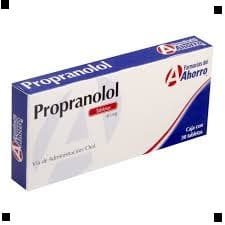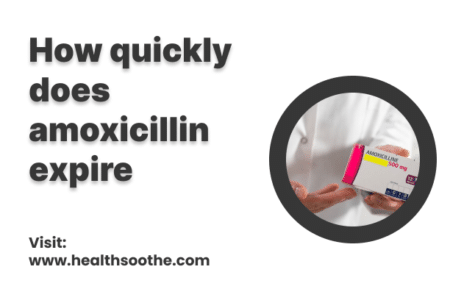In the quest to find answer to the question, “how quickly does propranolol work?”, you will find a description of the medication. Propranolol is a medication used to reduce heart blood pressure, treat angina, heart circulatory issues, tremors, and heart rhythm problems. It is also used to treat anxiety and any condition that makes the heart beat become erratic.
Quick Facts About Propranolol
| A | B |
|---|---|
| Brand Name | Inderal, Hemangeol, Dermotol, and others |
| Generic Name | Propranolol |
| Active Ingredients | Propranolol Hydrochloride |
| Type of Medication | Beta blocker |
| Forms | Oral tablets, extended-release capsules, oral solution, and injectable |
| Dosage | Varies depending on condition and individual factors |
| Uses | High blood pressure (hypertension), irregular heartbeats (arrhythmias), angina (chest pain), migraine headaches, essential tremor, stage fright and other performance anxiety, hyperthyroidism |
| Mechanism of Action | Blocks the effects of adrenaline (epinephrine) on the heart and blood vessels, slowing heart rate and lowering blood pressure |
| Benefits | Reduces risk of heart attack, stroke, and other cardiovascular events, improves symptoms of angina and migraine headaches, calms tremors and anxiety, can improve survival after a heart attack |
| Speed of Action | Propranolol starts to work quickly, usually within 30 to 60 minutes |
| Side Effects | Fatigue, dizziness, lightheadedness, cold hands and feet, sleep problems, sexual dysfunction, rarely, wheezing or shortness of breath (especially in people with asthma) |
| Important Warnings | Not for people with severe asthma or heart failure, can interact with other medications, including antidepressants and blood thinners, can worsen depression in some people, may affect blood sugar levels in people with diabetes |
| Availability | Prescription only |
| Cost | Depending on the pharmacy you visit, the cost for propranolol oral tablet 40 mg is around; |
Its action a beta-blocker makes a dangerous medication to be used by certain individuals, especially those with heart defects, those that have issues with their breathing, or have low blood sugar level. It works by reducing the pressure at which the heart works, consequently helping to manage heart issues such as palpitations, and psychological issues that cause high blood pressure, such as anxiety. It improves the efficiency of the heart but may make you feel funny when you have your first dose.
This article is aimed at giving you the needed information about the use of propranolol, what you should know before you use the medication, and help you determine its safety for you. It primarily aims at answering the common question among new users of the drug – how quickly does propranolol work. Expect to get more information on propranolol use after reading this piece.
What is Propranolol?
Propranolol is classified as a beta-blocker. It is a prescription drug that is used to treat heart anomalies when it comes to the pumping action of the heart, and helps to treat other illnesses, such as tremors, anginas, high blood pressure, and anxiety. It helps the heart work better under a lesser pressure, to help the affected individual ward of migraines and possible stroke.
It is available under different brand names, but popular among them is Inderal and Hemangeol – a liquid form of propranolol.
Propranolol causes some dizziness when used and is preferably used in the night when the users have retired for the day. Using it during day time and getting behind the wheels or handling heavy machinery is strongly advised against.
How Does Propranolol Work?
Propranolol as a beta-blocker exerts its effects on the user and brings down the blood pressure by widening the blood vessels, making blood circulation easier and consequently relieving pressure on the heart. Because Propranolol is a selective beta-blocker, that is it exerts its effect on certain body parts, in this case, the heart, it focuses on its target organ. However, its action on the heart helps to relieve pressure in other parts of the body.
The pressure in the human body increases when adrenaline is released. Adrenaline and noradrenaline cause the muscles of the body to contract in readiness for flight or fight, consequently causing an increased blood pumping pressure in the heart, which also makes the blood vessels contract, increasing pressure in the organs they lead to.
Propranolol blocks the beta-1 receptors of the heart and restricts it from receiving the information adrenaline is passing throughout the body. This helps the heart to gradually reduce its pumping intensity and consequently makes the blood vessels widen and reduce pressure in the other organs.
What is the required Dosage for Propranolol?
The dosage for propranolol depends on what condition it is being used for. Although it is suitable for adults and children that are above 12 years old, the dosages may differ from person to person.
When it is being used to reduce high blood pressure, the initial dose is 80 mg twice a day. However, it might be more than that, depending how much deviation from normal blood pressure the affected individual has. Also, your doctor may increase your dosage if your blood pressure does not respond to that dosage.
For migraine and angina, the dosage is usually split into twice or thrice daily at about 120 mg to 240 mg per day. However, for anxiety, a dosage of 40 mg per day, which may be increased to about 180 mg per day, split into two or three doses in a day.
How Quickly Does Propranolol Work?
Propranolol is best used about 30 to 60 minutes before any intended activity that may cause anxiety. For people who are new to this medication, it might seem like it doesn’t work if you use propranolol immediately before engaging in an activity that triggers anxiety. That is only because you are yet to know how your body responds to the drug.
It takes longer for some people to feel the calming effect, usually due to weight issues. However, you can expect your anxiety symptoms will not appear if you use propranolol about 30 minutes before engaging in the anxiety-inducing activity.
Therefore, the direct answer to the question – how quickly does Propranolol work for anxiety – is 30 to 60 minutes.
Warnings for Propranolol Use
As effective as propranolol is in helping improve blood circulation and addressing anxiety symptoms, it is not suitable for everyone. Its action may be detrimental to the health of certain people. It is, therefore, important that you inform your doctor of your medical history and what medication you’re on before you take a prescription.
It is not to be used by people suffering from:
- Asthma
- Low blood pressure
- Arrhythmia
- Sleep Apnea
Also, you should not use propranolol if you’re on medication that regulates your heart beat or have muscular problems. You should also avoid the use of antidepressants, anti-arrhythmia, and medications that causes sedation.
Side Effects of Propranolol
Propranolol causes the following side effects:
- Nausea
- Fatigue
- Low blood pressure
- Erectile dysfunction
- Memory loss
- Dizziness
- Difficulty sleeping or going back to sleep.
How to Take Propranolol
Propranolol is available in tablet and liquid form. The tablet form of this medication can be found in 10 mg and 40 mg. however, the liquid form, Hemagenol contains 4.28 mg of propranolol. It is to be taken orally.
Conclusion
Irregular heartbeat is a known problem, the same way high blood pressure is. However, there are medications that help reduce high blood pressure, and one of them is Propranolol. It works by blocking the beta-1 receptors of the heart from being affected by the adrenaline the body has released.
The answer to the question – how quickly does Propranolol work for anxiety – is answered in this piece and summarily, it takes between half an hour to one hour for it to address anxiety symptoms. However, it may take a lesser amount of time to address other issues it is used for.


